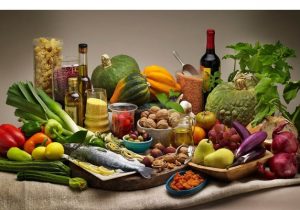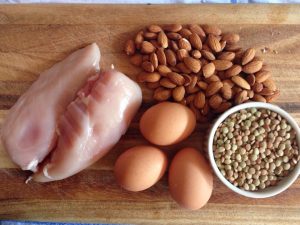By Heide Kennedy, Arizona Farm Bureau Communications Intern
You’ve probably noticed that recently plant-based protein sources have been gaining lots of attention. Some view them as a healthier source of protein than animal proteins, while others say the opposite. But, besides the fact that one is from a live animal and the other is just from a plant, are there any significant differences between plant-based protein and animal proteins? 
One of the main differences between plant and animal proteins is their amino acid content. All proteins are made up of amino acids, but certain proteins have more than others. Our bodies use 20 different amino acids, and our bodies make all of them except for 9. The remaining 9 we have to get through the proteins that we consume. This is where animal and plant proteins begin to differ. Animal proteins are considered “complete proteins,” which means that they have all 9 of those amino acids that we need. Most plant proteins are incomplete proteins, as they don’t have all 9 amino acids.
Another difference between animal and plant proteins is the type of iron that they provide. Animal protein sources offer us a kind of iron called heme iron. This kind of iron is more readily absorbed by our bodies than the non-heme iron that plant proteins have to offer.
A final difference between the two protein sources is their protein density relative to their calorie content. Animal proteins offer more protein per calorie than do plant protein sources. In other words, you get more protein bang for your caloric buck when you eat animal proteins. Since plant proteins are a lot lower in protein overall than animal proteins, you’d have to eat a lot more of them to equal the amount of protein you could be getting from a smaller portion of animal protein.
This is only a broad overview of the many differences between plant and animal protein. While there is nothing wrong with either, and both should be included in a healthy diet, animal proteins are the better option, as they have all of the 9 essential amino acids, have better-absorbed iron, and have more protein per calorie.
Did you know that Arizona Agriculture produces lots of fresh, locally-grown animal protein products? Look for Arizona eggs, dairy products, and meats the next time that you’re out shopping!
For more health-related articles, check out the Fill Your Plate blog!




